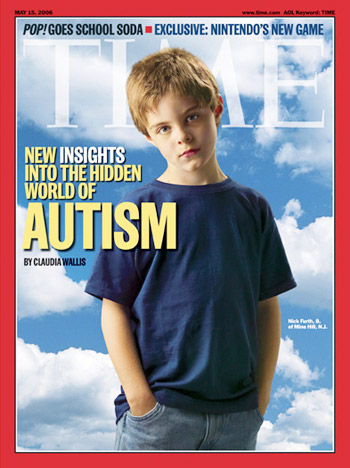
This Science post is by Staff blogger, Leanne Chukoskie, Ph.D.
Like most parents, the Jensens had little information about the factors that might help explain their son’s autism other than it was compounded by severe and frequent seizures. When their son was tested, however, they learned that Levi’s cells harbored a mutation that affected the way his cells produced energy. the Jensens now had valuable information to help treat their son. For individuals with his particular type of mitochondrial dysfunction, certain seizure medications can cause serious side effects.
In a way, Levi Jensen was lucky. He lived near a large research center that specializes in mitochondrial disorders which is funded by Autism Speaks to investigate the role mitochondria play in autism spectrum disorders (ASD). the diagnosis of mitochondrial disorder or dysfunction is difficult. Multiple tests, often including an invasive muscle biopsy, are required. How many other individuals with autism might benefit from a deeper understanding of how their cells use energy?
A new study released today in the Journal of the American Medical Association (JAMA) reveals that children with autism may have more trouble fueling the energy demands of their cells due to dysfunctional mitochondria. In this new Autism Speaks-funded study from UC Davis, blood samples from 10 children between the ages 2 and 5 years old and diagnosed with autism were compared with matched control samples from typically developing children. the investigators found evidence of “breaks” in the cascade of enzymes that mitochondria use to create energy in 8 of 10 autism samples, but no control samples. They found evidence of a mutation in a gene that supports mitochondrial function, also only in the autism samples. Lastly, in most of the autism samples, there were extra copies of mitochondria. the over-proliferation of mitochondria may also be a sign that individually the mitochondria are not working optimally, and are compensating for reduced function from each mitochondrion by producing more mitochondria overall.
Previous studies have shown that breaks in mitochondrial function can lead to a host of disorders, and the energy-demanding brain can be particularly affected. however, none of the previous autism studies has shown as high a proportion of impaired mitochondrial function as the current study. Cecilia Giulivi, Ph.D., the lead researcher on the study and a professor of Molecular Biosciences in the School of Veterinary Medicine at UC Davis, was drawn to research abnormal energy metabolism in autism because several symptoms of ASD overlap with mitochondrial diseases.
“We wanted to test the hypothesis in a direct way: is there a mitochondrial dysfunction in material readily available from children with full autism syndrome?” says Giulivi. the research team chose to look at white blood cells—lymphocytes—because they are a type of cell that has significant quantities of mitochondria. Drawing blood is much less invasive than obtaining a muscle biopsy, but traditionally mitochondrial function has been difficult to assess in blood because there are relatively few mitochondria in blood, compared with other body tissues. In fact, red blood cells have no mitochondria at all.
While these results are an exciting new development for both this area of research and for families, it is important to remember that this is still the edge of science and not yet a clinically-useful set of tests. however, if replicated, these tests could make screening for mitochondrial dysfunction much more accessible.
Dr. Giulivi and colleagues are already taking the next steps to follow up this research. They are studying the families of children with autism to try to understand the mechanism that causes the mitochondrial deficiency. the samples are part of a larger study (CHARGE; Childhood Autism Risks from Genetics and the Environment) in which the investigators are already measuring both genetic and environmental influences on autism risk. Adding mitochondria to that mix will be especially helpful. Dr. Giulivi was also quick to add a note of deep appreciation for all the families that participated in the study, saying “Without their participation, we couldn’t have done it!”
Indeed the enthusiasm for research participation often works both ways. the seizure medication Levi had been taking—Depakote—seemed to make Levi very drowsy. At three years old, Levi was sleeping and napping for 16 hours of the day. His mitochondrial specialist switched medication right away due to concern of an underlying mitochondrial disorder for which Depakote produced severe side effects.
The Jensens are thrilled to report that Levi now has more energy than ever, has regained words that he lost prior to the medication change, and is generally functioning at a much higher level. For Levi’s parents, Curtis and Alaina Jensen, learning about Levi’s mitochondrial disease helped them gain an understanding of metabolic functions and sparked creative ways to make special considerations for the remaining challenges Levi faced. Alaina says, “We have found that exercise has been a big key for Levi to feel good and increase his energy and stamina. it took a long time for him to build up the endurance to play, but it has been worth all the effort. With a combination of the right seizure medication, supplements, exercise and diet, we now have a very happy boy.”
Click here to view the press release on this new report.